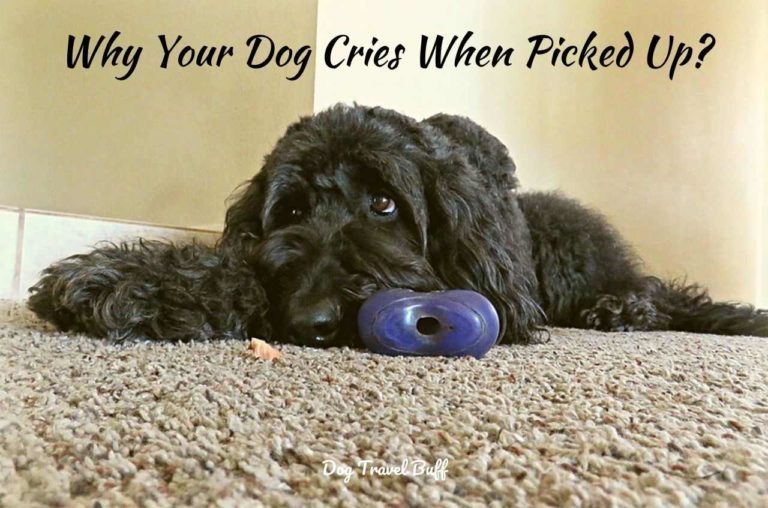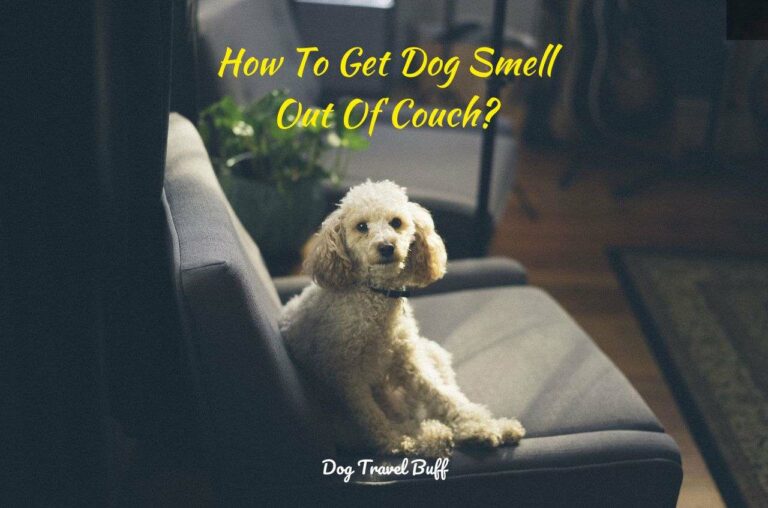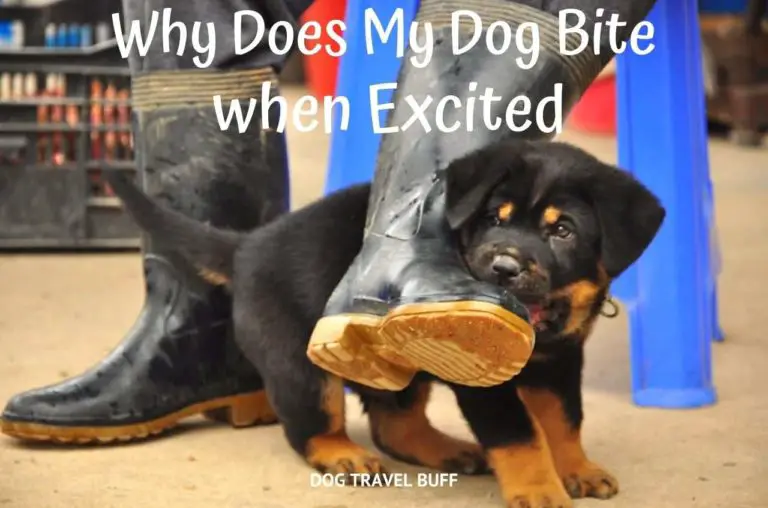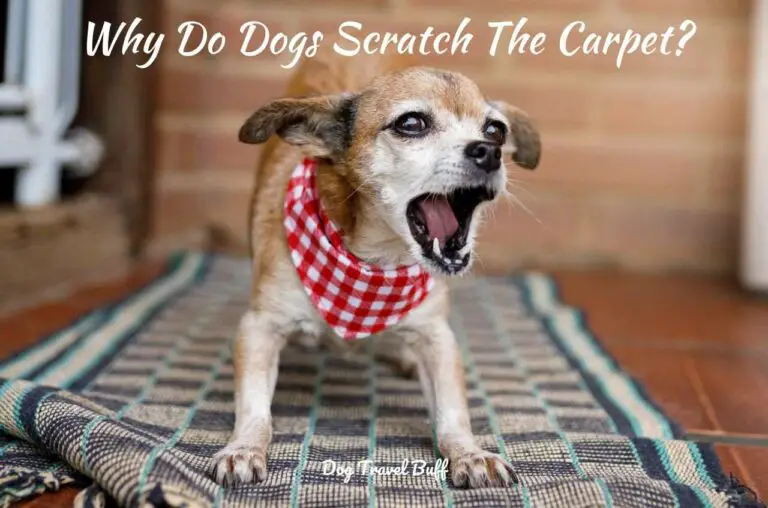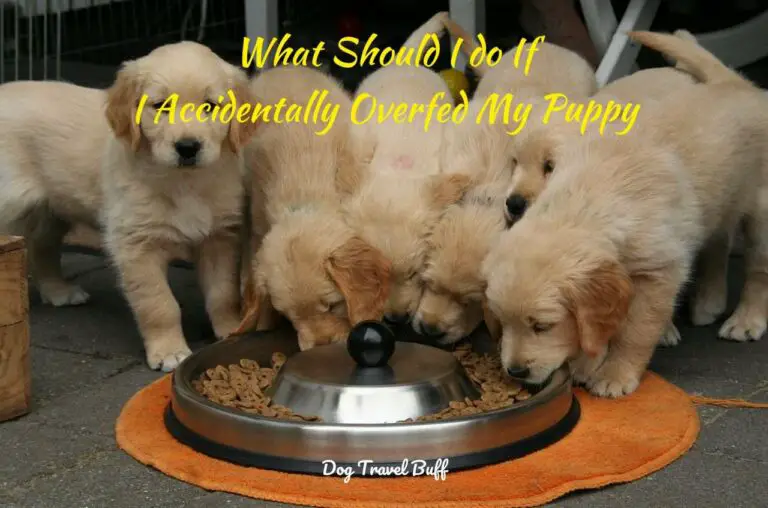My Dog Ate a Whole Bag of Treats: What Happens? What to Do?
How much food is too much food? Dogs love to munch on everything, but this can be a serious issue if left unchecked. Pet parents have often come up with questions like my dog ate a whole bag of treats and have wondered what to do.
The first step would be not to panic and assess the situation, understand the risks, recognize symptoms, and take immediate action. Future planning is also needed to avoid any cases of bloating in dogs. In this article, we will tell you how to manage such scenarios when your canine goes on a food overdose.
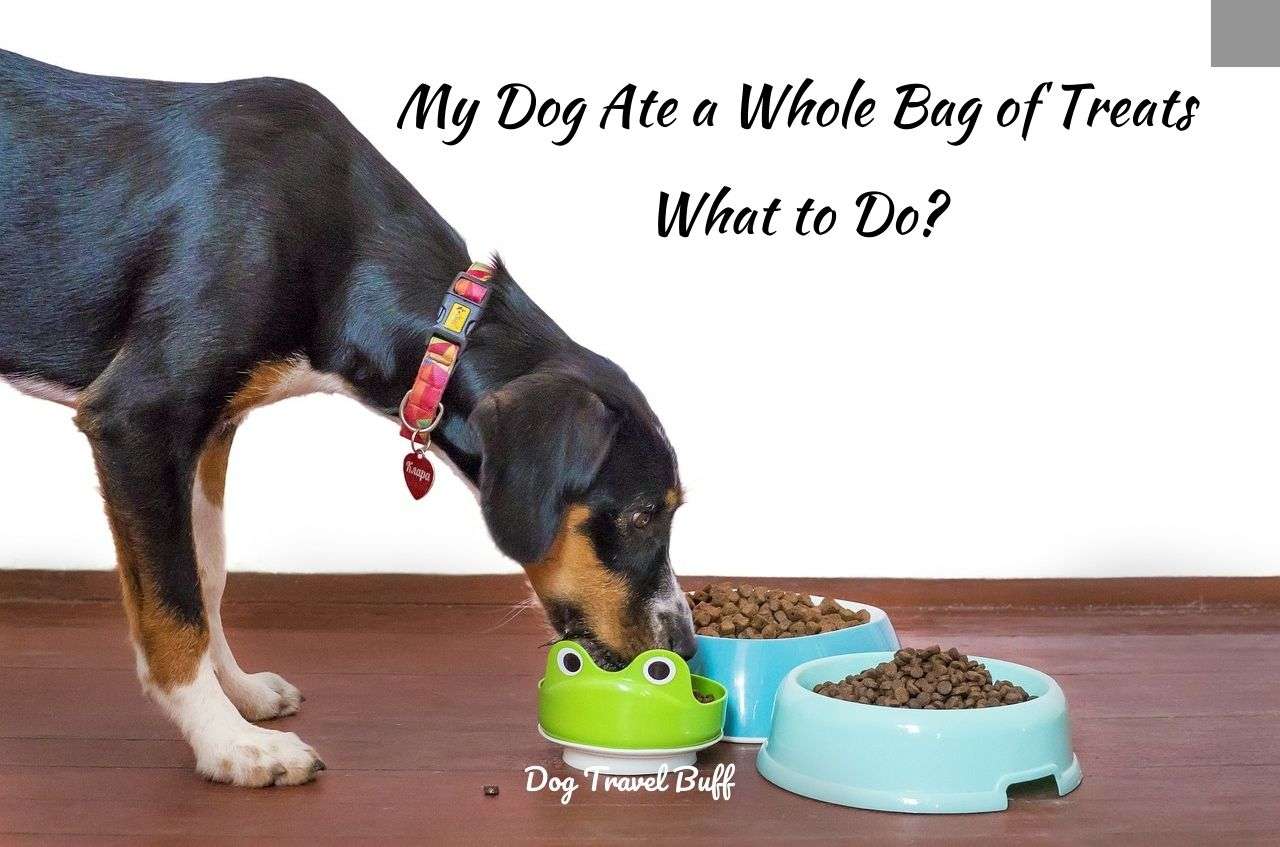
This post may contain affiliate links. If you buy something through one of those links, you won’t pay any extra penny, but I’ll get a small commission that encourages me to deliver more helpful content for you.
Table of Contents
Assessing the Situation
Even if you have an inkling of a thought that your dog ate all the treats, or you find an empty packet of a treat bag and your dog is acting unusually, it is enough of a hint to start thinking methodologically by assessing the situation. Here is what you should do:
1. Keep Your Cool
First things first, take a deep breath and try to stay as calm as possible. It is easier said than done, but this is very crucial as dogs can pick up on our stress, and it won’t help the situation. If you stay composed and not panicked, you can chalk out what you need to do next.
2. Inspect Those Treats
Next up, you will need to take a good look at the treats your dog devoured. What kind were they, and how many? This is essential information that’ll help you figure out what you’re dealing with. Start checking the ingredient lists if your canine has eaten from a food packet and the health hazards it can have when on an overdose.
Also, notice if there are any harmful ingredients like raisins and chocolates so that you can immediately run to your vet. You should also look at your trash cans as they may have also eaten leftover or ruined meat.
3. Call Your Vet
If you’re not sure about the treats or if your dog might be in danger, don’t hesitate – give your veterinarian a call. Share all the details you’ve gathered about the treats and your dog’s condition.
Your vet will give you personalized advice based on your dog’s size, breed, and the specific treats involved. Even if you suspect that your canine consumed the entire treat bag, it is never too late to make a call to your vet.
4. Keep a Close Watch
After talking to your vet, it’s time to keep a close watch on your pup. Make sure they stay hydrated and follow any feeding recommendations your vet provides. Keep an eye on their behavior and health. If things get worse or your vet suggests it, be ready to take your dog for a check-up.
Remember, staying calm and focused is your best ally when dealing with a treat-overdosed pup. By following these steps, you’ll ensure your furry friend gets the care they need and recovers soon.
Understanding the Risks
As a responsible pet owner, you should be aware of the potential dangers that are associated with a dog eating an excessive number of treats. Different types of treats pose different risks. For instance, high-fat or high-sugar treats pose a greater risk of pancreatitis and dental issues, while toxic ingredients can lead to poisoning. Here, we will guide you to understand these dangers.
1. Obesity
If your dog ingested a bag of treats, the most immediate concern is overeating. Treats are very much calorie-dense, and if taken excessively, they can lead to weight gain and obesity in dogs. This can result in a lot of health problems, including joint issues, diabetes, and probable heart disease. Your dog will also become lethargic and will be uninterested in performing any activities.
2. Gastrointestinal Issues
Another common risk is gastrointestinal distress. Treats, especially when consumed in large quantities, can upset a dog’s stomach, leading to symptoms like vomiting and diarrhea. It can lead to severe dehydration and be sometimes fatal. This is a major risk for your pet and may require immediate medical attention.
3. Pancreatitis
Some types of treats, particularly those high in fat, can trigger pancreatitis in dogs. For instance, ingesting too much chicken, beef, and fish isn’t advisable. This is a painful and potentially life-threatening condition characterized by inflammation of the pancreas. Symptoms will include severe abdominal pain, vomiting, and diarrhea.
4. Allergic Reactions
Different treats contain various ingredients, and if a dog consumes a treat they’re allergic to in large quantities, it can lead to allergic reactions. Take, for example, any dairy product that can immediately manifest in issues such as bloating and an upset stomach. Allergic reactions can be that of itching, hives, swelling, or even difficulty breathing.
5. Dental Issues
Treats, especially those that are sticky or sugary, can contribute to dental issues like tooth decay and gum disease. Chewing on hard treats excessively can also lead to dental fractures.
6. Toxic Ingredients
Certain human foods or ingredients used in some treats can be toxic to dogs. For instance, chocolate, raisins, and xylitol are highly toxic to dogs and can result in severe health issues or even death if ingested in large amounts. This is a serious dog treat overdose.
7. Bloating and Gastric Torsion
In some cases, especially with large breed dogs, consuming a large number of treats quickly can lead to bloating (gastric dilatation) and potentially gastric torsion (twisting of the stomach). These conditions are life-threatening emergencies that require immediate veterinary attention.
8. Behavioral Issues
Overindulgence in treats can lead to behavioral problems as well. Dogs may become food-possessive, beg more frequently, or have difficulty controlling their impulses around food.
9. Nutritional Imbalance
Feeding excessive treats without considering your dog’s overall diet can result in a nutritional imbalance. Dogs may not receive the necessary nutrients from their regular meals if they fill up on treats.
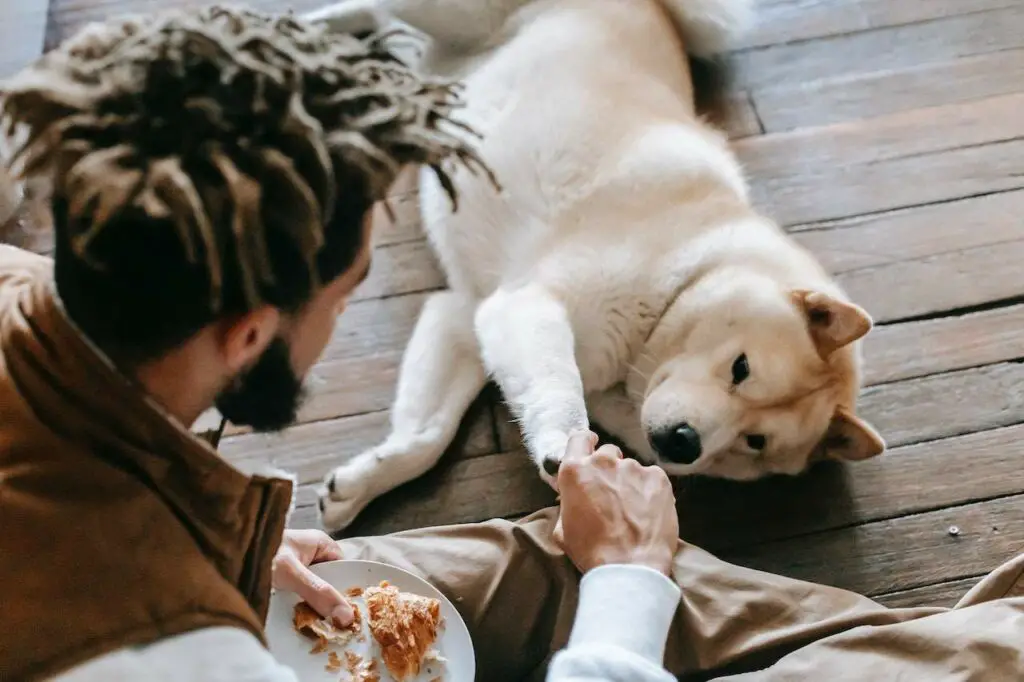
Recognizing Symptoms
Symptoms of treat poisoning in dogs can change from one pet to another. However, these are some of the common symptoms you can look out for, noticing that you should start monitoring your dog’s behavior. Acting early, you can give timely treatment, prevent any further complications, and save your dog’s life.
Here are the symptoms and warning signs you should watch out for:
1. Vomiting and Diarrhea
You suddenly notice your dog having an upset stomach and feeling nauseous. This can indicate that your pet has ingested something unsuitable. They may also start drinking excess water as dehydration is also a common symptom of pet poisoning from treats.
2. Loss of Appetite
In case your dog is not eating anything and is showing an aversion to food, it can be a symptom of binge eating on treats. Diarrhea and Vomiting in combination can also cause them to look away from food.
3. Excessive Drooling
While drooling is a normal feature for dogs, excessive drooling can signal something wrong. This may be a sign that your dog is feeling uncomfortable and nauseous.
4. Restlessness
Many dogs will suddenly show restlessness and become jumpy. If you see your dog freaking out, you can guess that it may be due to something toxic he ate.
5. Seizures
Seizures are concerning and are often the common symptoms of a treatment overdose. It is a sign that your dog’s body is reacting to the foreign substance and needs immediate help.
Immediate Actions
Once you start thinking about what to do if your dog eats treats, it is time to take immediate action. Here are some ways you can intervene:
Wrap your Dog in a Blanket
The first step would be to make your dog feel comfortable and calm him down. Try wrapping a blanket on him and gently rub his head.
Wash and Flush the Dog’s Mouth
Check your Dog’s mouth to see if there are any toxic substances present, and even if you can’t spot any, you must flush his mouth with water. You can also try washing your dog if you sense any odor coming off him.
Induce Vomiting under Professional Guidance
Vomiting is a sign that your dog’s internal system is trying to get rid of the poison. If your dog is unable to do it on his own, you can call a professional or an expert who can induce vomiting.
This is usually done by giving 1 tablespoon of 3% hydrogen peroxide per 20 pounds every 10 minutes until vomiting starts. Note that you should not try this on your own, and it is best to do it in a veterinary clinic or by an animal expert.
Contact the Vet or the Animal Helpline
Keep the helpline number always with you so that you can give medical attention to your dog immediately when needed. You can also take him to the vet yourself at the earliest and detail his symptoms and the type of treatment he consumed.
Veterinary Care
Veterinary care for treatment overdose is paramount if your pet has a bloated stomach or ingested a whole bag of treats. Once you take him to the vet, the doctor will start by checking his breath, pulse, and other symptoms.
Sometimes, you may have to let your dog stay overnight at the clinic so that they can do whatever is necessary. Your dog may also be given fluids in case of dehydration from vomiting and diarrhea. After you bring your dog home, follow the vet’s instructions as suggested for your dog treat overdose symptoms and treatment.

Preventing Future Incidents
Now that you have brought your dog back home, it is high time you start taking actions that will help prevent future accidents. These include strategies for keeping treats out of reach for dogs and pet-proofing techniques for treat storage and accessibility.
Keep Treats in Tight Jars
You should be keeping your dog’s favorite treats in air-tight containers, which are not only difficult to open but will also prevent the food from going bad.
Place Jars at Places They can’t reach
If you keep jars in places like a pantry or a high cupboard, it will be difficult for them to reach and access them anymore.
Train Your Dog to Stop Overeating
Begin by giving positive commands to your dogs, which will help them understand that they should not be overeating. With daily sessions, your dog will be able to control his urges all by himself.
Supervise Visitors
It is very common for guests to come and feed your dog some treats. Let your visitors know of the dangers of this practice, and if needed, monitor your dog’s eating habits.
Long-Term Effects and Recovery
As we have already mentioned above, the canine health risks from eating an entire bag of treats and long-term effects like obesity and gastrointestinal torsions that can happen if your dog overindulges in a certain food; now you should understand the importance of making dietary changes.
Once your dog starts to recover, monitor his habits so that he does not start binge eating. Try changing his dietary habits and prevent toxic food like chocolates and raisins. You can rather give him novel protein and see if they are adjusting to it well. Also, do not forget to go for regular vet checkups, as they can best understand if your dog is recovering or not.
Conclusion
Excessive dog treat consumption is never a good habit, and now that you are aware of it, you can learn all the ways to take action and prevent future accidents. Ensuring your dog’s safety is your responsibility, and nothing makes a pet parent happier than seeing a healthy and disease-free dog.
Read Next:
- Why Is My Dog Eating Slower Than Usual?
- 7 Reasons Why Your Dog Is Not Eat After Surgery
- I Accidentally Overfed My Puppy: What To Do?
FAQs:
1. Can food bloat in dogs resolve itself?
A: No, food bloats don’t resolve themselves, and you should never wait for it to happen. Rather, you should be taking your dog to the emergency vet room.
2. Should I induce vomiting if my dog ate a whole bag of treats?
A: You can, but only if you are a certified professional or trained in such incidents. It is best to ask for help from animal helpline numbers or take them to the vet.
3. Is there a risk of long-term health effects from this incident?
A: Risks can persist depending on the severity of the incident. However, being aware and cautious in the future can minimize any risks.
4. Can you recommend dog treat brands that are safer for pets?
A: While brands like Pedigree Tasty Minis and SmartBones are safer, you should still be checking with your dog’s vet to get recommendations.
